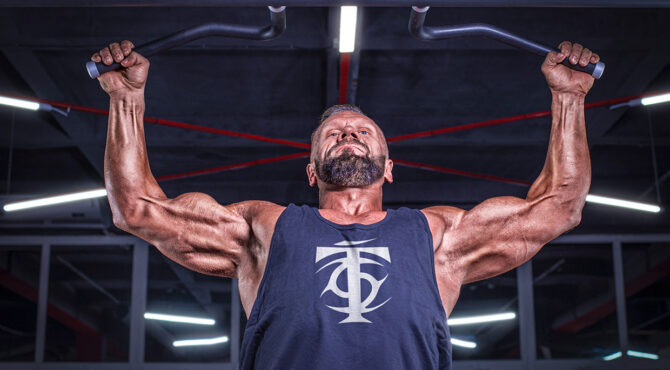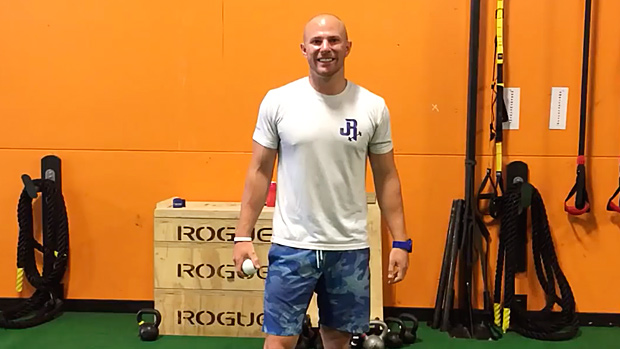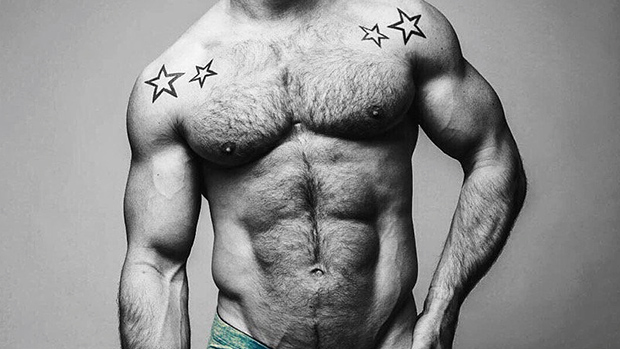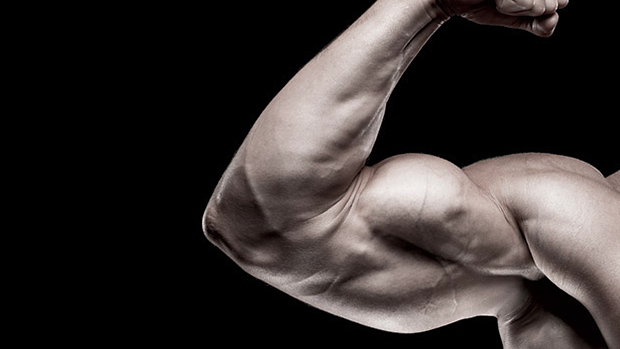Fix Your Pull-Up, Build Your Back and Biceps
We've all seen butchered pull-ups and chin-ups: head ducking forward, shoulders shrugging up, minimal scapular involvement, arms that don't come close to straightening at the bottom, and a torso that gyrates like a carwash balloon mascot. These are usually symptoms of weakness and lack of technique.
It's time to drop the ego-driven reps and dial in your technique. That's where the DC pull-up comes in. Here's how to do it:
The DC (or Foot-Assisted) Pull-Up
It's like the Z-press of pull-ups. The position will encourage you to use solid mechanics and minimize cheating.
Make no mistake, having your feet supported doesn't make this easy. The DC pull-up is great for both beginner and advanced lifters. Also, for those who don't have access to a lat pulldown machine, you can set this up in a home gym with minimal equipment.
You'll need a bench or chair to support your feet. I prefer to use a pair of suspension straps or gymnastic rings as independent handles, which gives your hands freedom of movement and provides various options.
Set your equipment up so that in the bottom position your hips are flexed, your knees are slightly bent, and your arms are straight while being in line with your torso.
Initiate the movement by depressing through the shoulders first, then let your elbows drive back and down. At the top, keep your head neutral and your shoulders pulled down. Lower back down to the start while using minimal assistance from the lower body.
No rings at your gym? Set it up in a Smith machine as Gareth Sapstead demonstrates here:
Now let's get to the variations.
Loop a mini-band around your wrists and grab a pair of suspension straps or rings. As you pull up, focus on putting outward pressure on the band. Pull your elbows back at the top of the movement while keeping your chest up.
This move will stress abduction and retraction at the shoulder and create a nice contraction in the upper back.
Crisscross the rings so that your right arm grips the left ring and vice versa on the other side. This position will place your upper arms closer together and add a greater stretch at the beginning of the movement.
As you begin the lift, actively pull the elbows down and apart for an intense squeeze of the lats and upper back. Lower back to the start with a full extension of the elbows, arms in line with your torso.
Raise your legs for the lowering portion. If you haven't mastered the pull-up yet, this can help get you there. It's also effective at cleaning up technique if you rely on momentum or shortened ranges of motion.
For a more advanced lifter, after going to relative fatigue, lift your feet and do a slow and controlled negative. This will put additional stress on the upper back and increase the time under tension for the set.
Loop a band around your hips or try placing a plate on your thighs to provide some extra resistance when higher reps are no longer challenging.
This is a simple way to extend a set beyond failure. Do a regular set of pull-ups with your hips flexed and feet supported on a bench. When you reach fatigue, extend your hips so that your body forms a straight line.
Continue the set by doing rows from this position and getting an awesome upper back pump in the process.
This is a challenging variation, so it may require more knee bend and a higher foot support. Set your feet, then grab a handle with one arm. Initiate the movement by depressing your shoulder.
Use your free hand to grab your working forearm to assist the movement as you continue to pull. Use only the necessary assistance. The closer you grab toward the working wrist, the more helpful the assistance will be.
It'll feel easier if you turn your torso toward your working hand as you pull. This variation will place considerable tension on the biceps and upper back.





